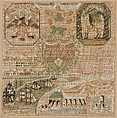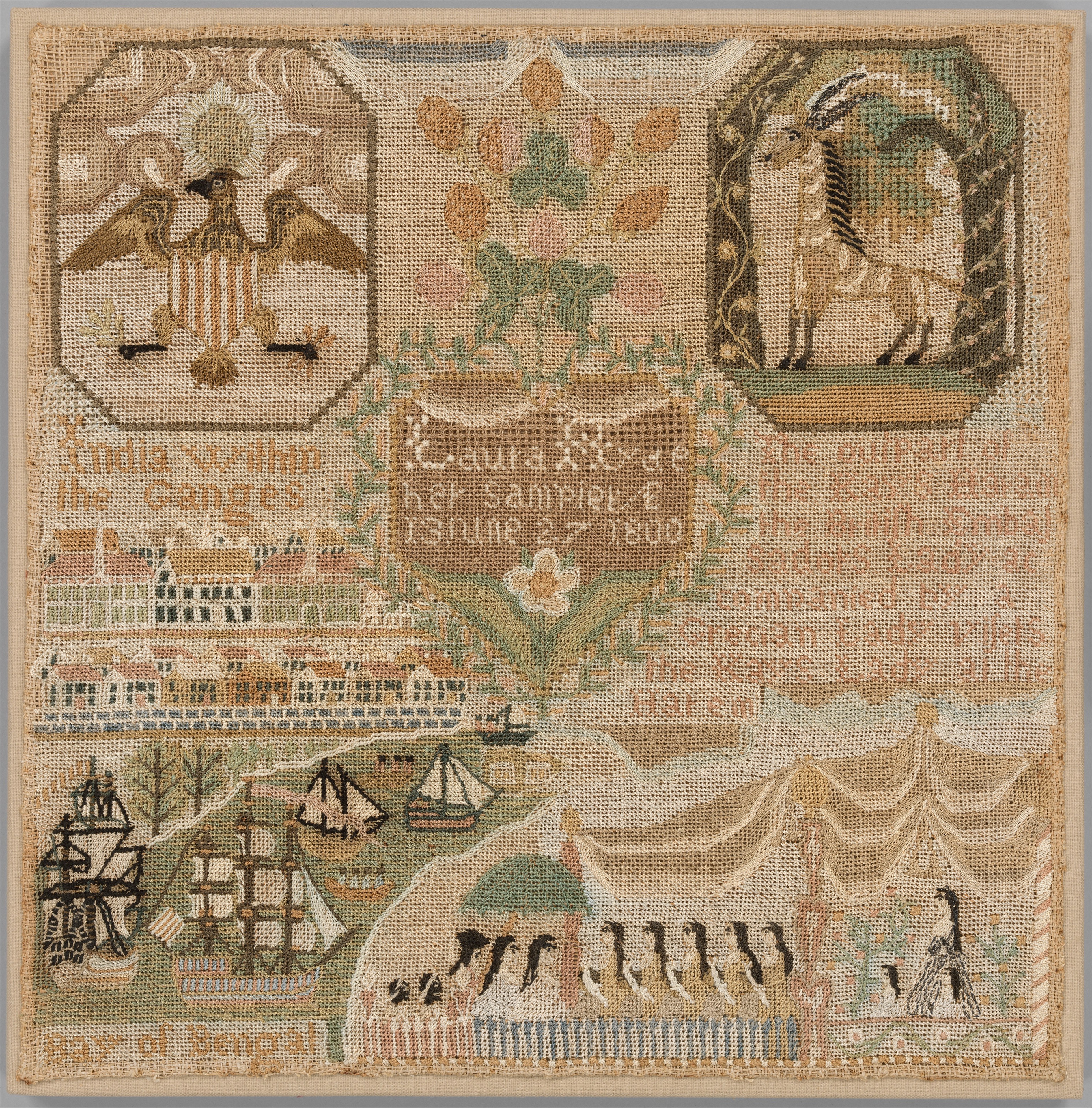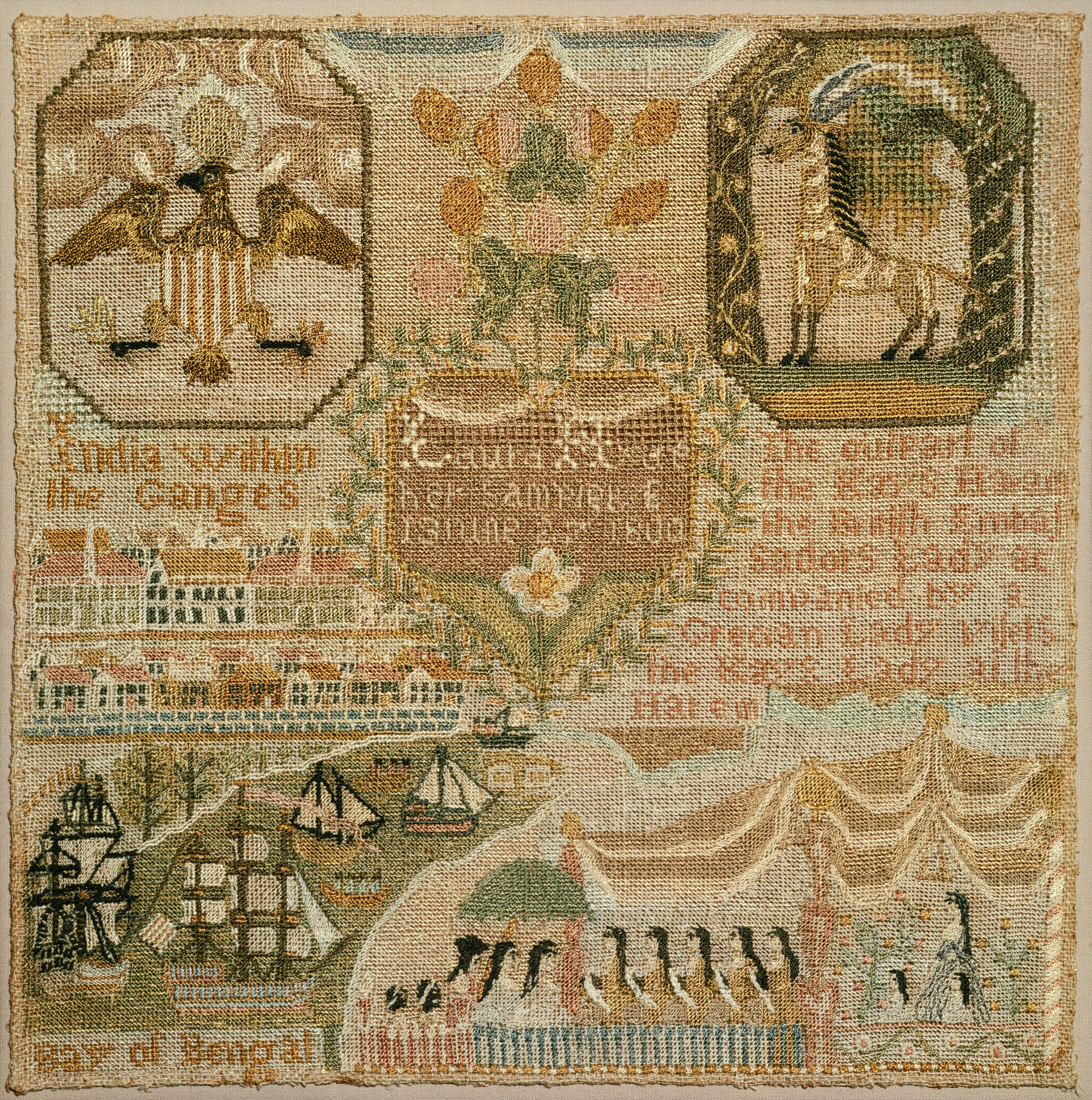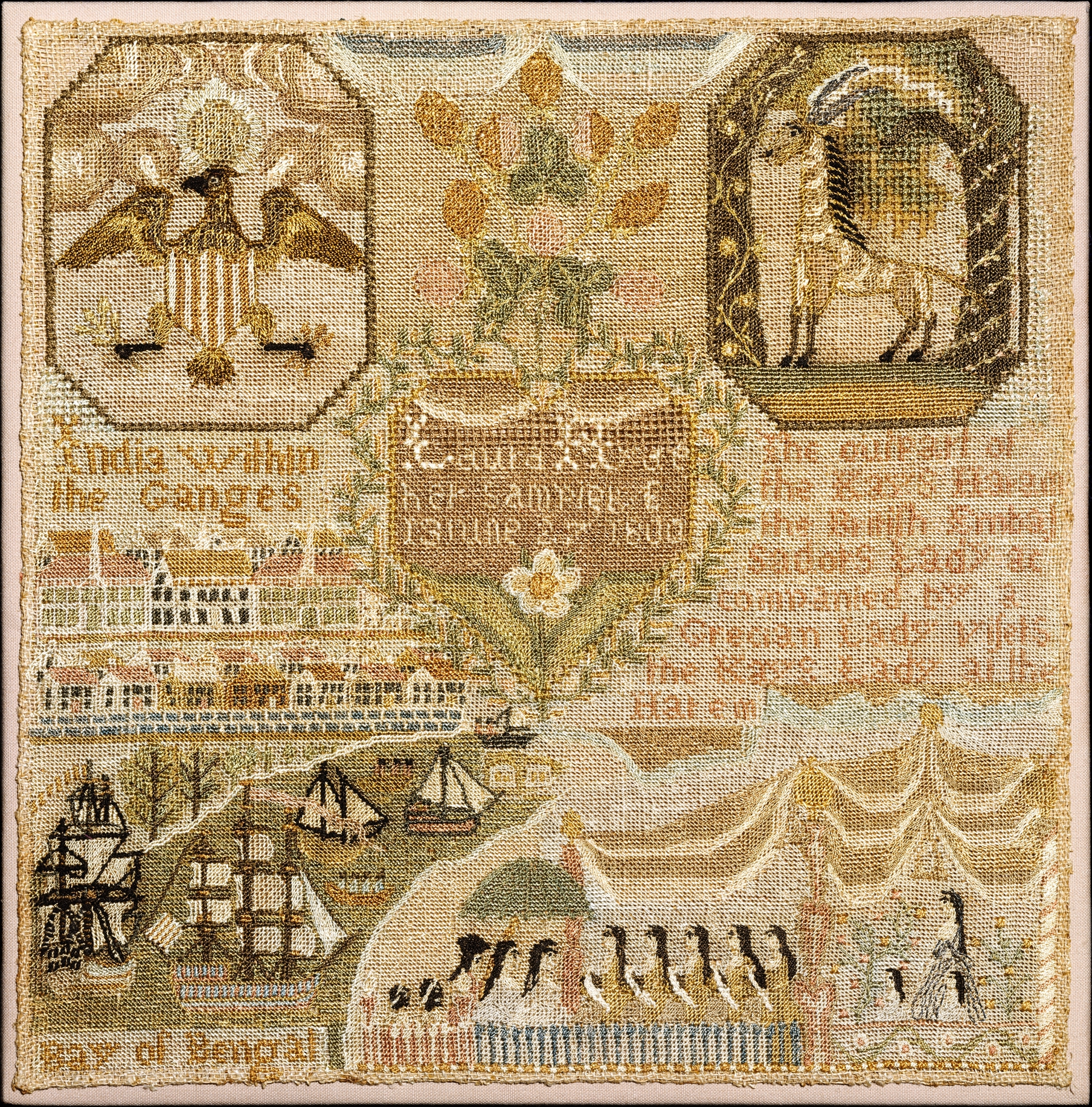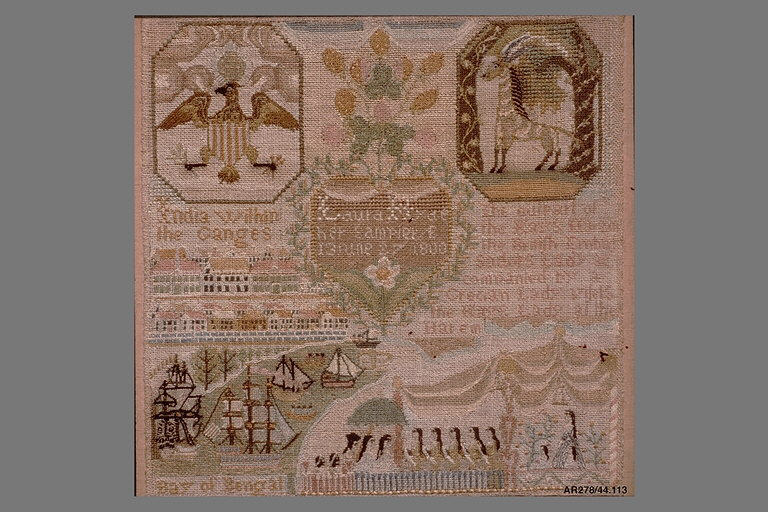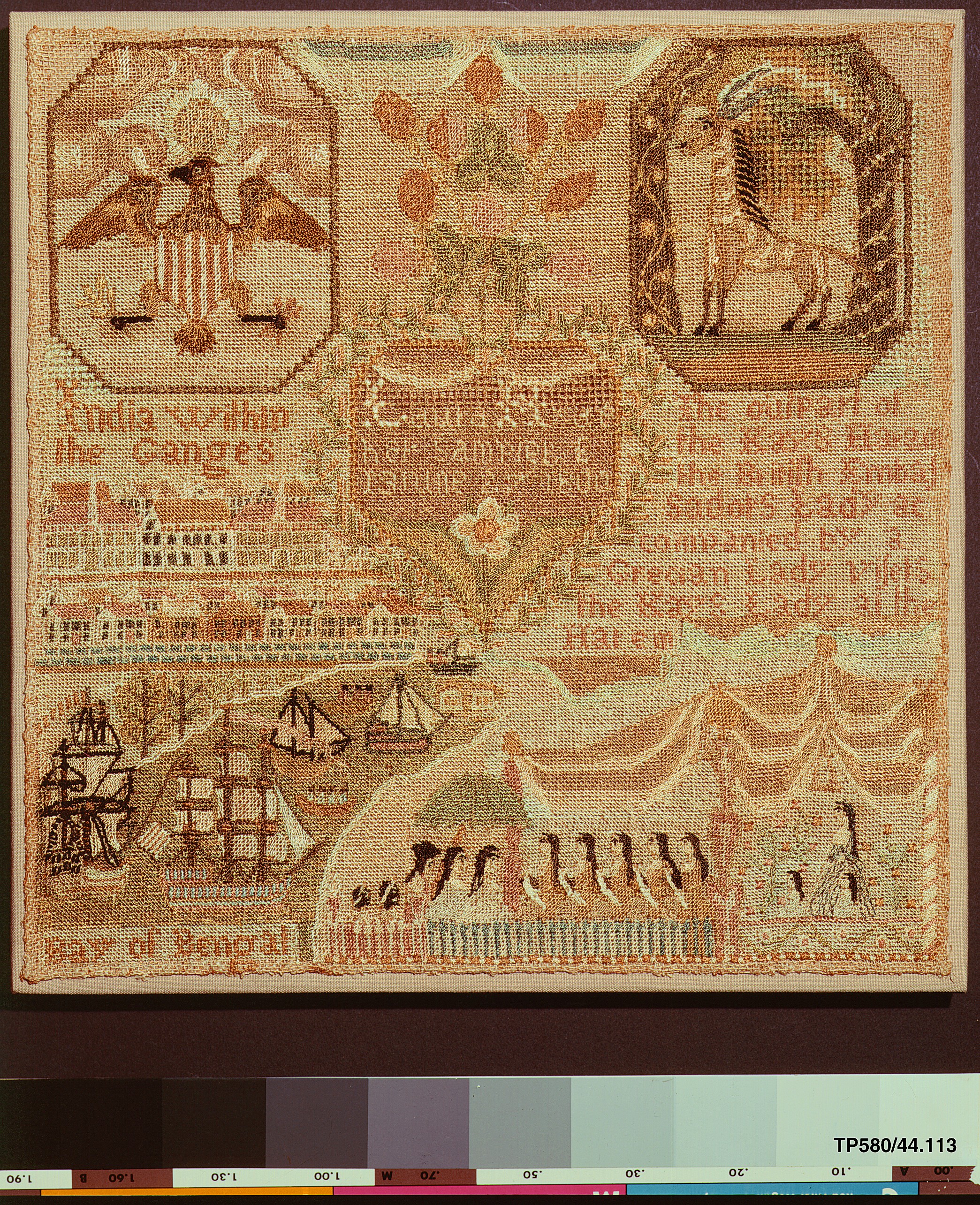Sampler
Laura Hyde American
Not on view
In 1800 thirteen-year-old Laura Maria Hyde made the rather surprising choice to embroider a scene of a Turkish harem onto this needlework sampler. Hers is one of three similar samplers which are thought to be made under the instruction of the Misses Nott, who educated young ladies in the parsonage of their father, Congregationalist minister and educator the Reverend Samuel Nott (1754-1852). Laura’s sampler, and that of Anna Huntington (MMA. 2023.318), are two of the three known Nott samplers made between 1797 and 1803. Both Laura and Anna’s samplers feature large sailing ships in faraway lands, such as Laura’s scenes with "India Within the Ganges" and the "Bay of Bengal," and Anna’s scenes of views of the walled city of "Jerusalem," and "The Levant." While these views may have derived from prints or illustrated books, common sources of inspiration for teachers and students of needlework, Laura’s scene of the harem on the lower right is unique, not based on any known print. It illustrates Letter 33 in the 1763 published correspondence of Lady Mary Wortley Montagu (1689-1762), one that she wrote to her sister the Countess of Mar, from Adrianople, Turkey. Lady Mary traveled to Turkey in 1716, when her husband, Edward Wortley Montagu, was appointed the English ambassador there. In the letter, she describes her visit to the harem of the "kayha’s lady," the "gloriously beautiful" Fatima, the wife of the steward of the grand vizer’s establishment. In Laura’s embroidery the scene unfolds as described: Lady Mary and "the Greek lady" (her interpreter), under a large umbrella, are escorted into the tent of the harem. There they walk "between two ranks of beautiful young girls" to "a sofa, raised three steps, and covered with fine Persian carpets," where they meet Fatima and her two young daughters.
Why did scenes of Turkey and India appeal to young Laura Hyde as subjects for embroidery? One of the ships in her rendition of the Bay of Bengal flies an American flag. The sampler was made not long after the commencement of direct American trade with India in 1784, and Norwich, a shipping town north of New London on the Thames River, likely benefited from this connection. This schoolgirl’s sampler reminds us that trade facilitated the new United States’ arrival on the world stage. In addition, the turn of the nineteenth century saw a greater emphasis on the intellectual education of girls, and who could have been a better role model for a young woman than the glamorous, literate, and adventurous Lady Mary?
Laura Maria Hyde was born in Franklin, Connecticut, on May 21, 1787 to Joshua Hyde (1756-1830) and Cynthia Tracy Hyde (1758-1829). The Hydes were descendants of English settlers who emigrated in Norwich, Connecticut, in 1636. Laura’s father was a prosperous farmer who served as a representative in the Connecticut legislature. They had two daughters, Laura and her older sister Lucy (1783-1843). When Laura was 22 years old she married Burrel Woodworth (1774-1849) of nearby Bozrah, Connecticut. He was a clothier who served several terms in the Connecticut legislature. Laura and Burrel’s first two sons died very young, and their third son, Joshua Hyde Woodworth, was born in 1814 followed by the birth of two daughters, Martha Margaret Sarah (1816-1857) and Sarah Tracy (1821-1851). After their children were grown Laura and Joshua moved to Norwich, Connecticut, where he died in 1849. She died 8 years later aged 70. Laura bequeathed her estate to her unmarried daughter, Martha, which was valued at $1,086.00. The inventory of Laura’s Will lists 3 feather beds, 6 pairs of linen sheets, 6 pillow cases, 4 blankets and comforter, 1 set of China, 6 silver forks and spoons; and 9 shares of Norwich Bank Stock valued at $900.00 and cash in her savings bank valued at $110.00. Laura’s daughter Sarah, married Nathan Waterman Bingham and they lived in Norwich. Her son, Joshua, married Elba Southworth and in the 1840s moved to Marysville, Yuba County, California, "The Gateway to the Gold Fields" during the California gold rush era of 1848-1855.
Due to rights restrictions, this image cannot be enlarged, viewed at full screen, or downloaded.
This artwork is meant to be viewed from right to left. Scroll left to view more.
